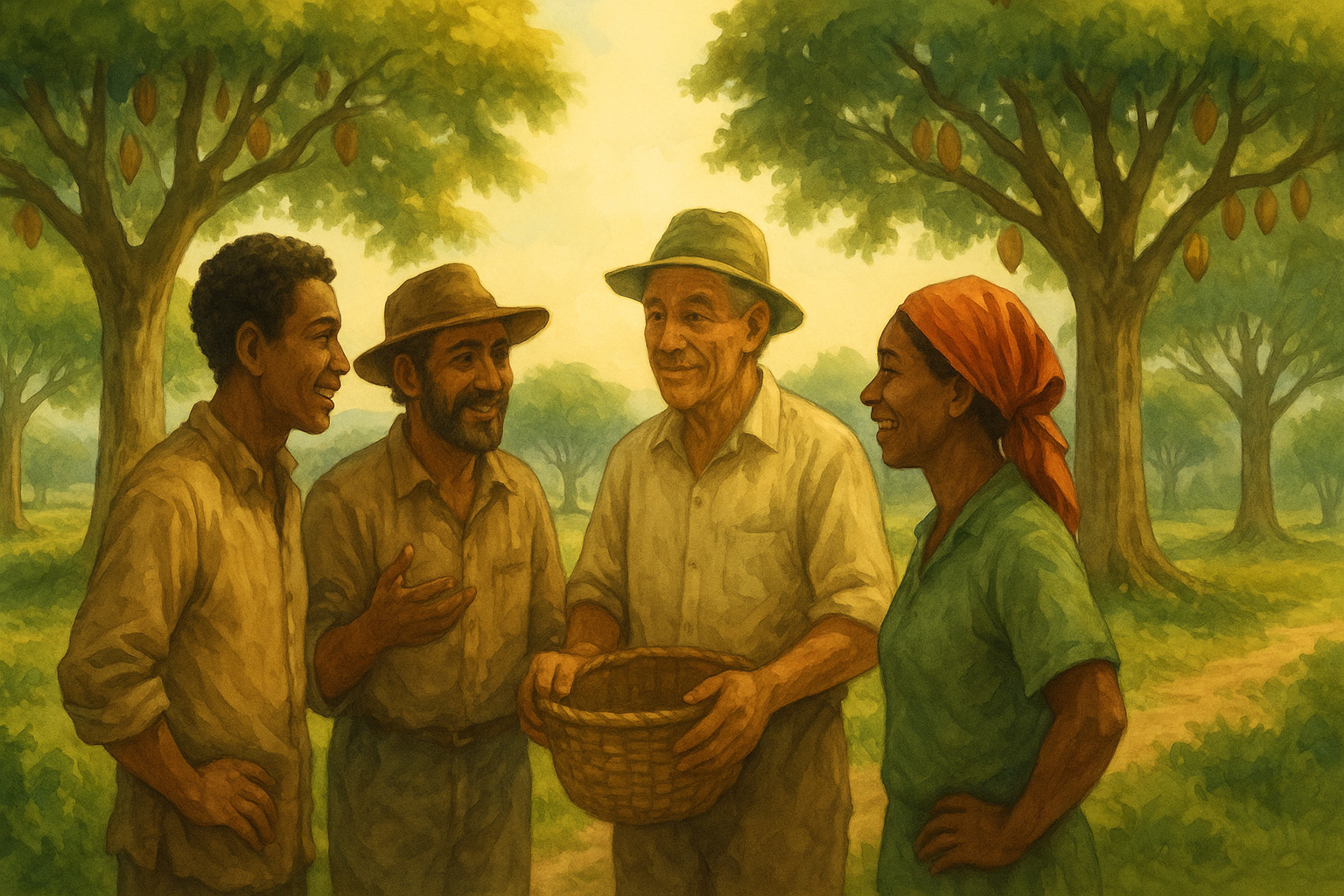Why should tree crop farmers work together rather than operate in isolation? The short answer is that cooperation amplifies strengths, spreads risk, and opens access to opportunities that individual farmers often cannot reach alone. This is especially true for those managing long-term crops like cocoa, coffee, rubber, palm, or cashew, where cycles are lengthy, markets are volatile, and production challenges require both collective knowledge and shared resources.
Understanding the Value of Cooperation
Tree crop farming demands patience and long-term investment. In such an environment, smallholder farmers face common challenges: fluctuating prices, climate unpredictability, pest pressures, and access to quality inputs. When farmers operate as a united body, they create scale. This scale influences bargaining power, market access, and even policy recognition.
A cooperative model shifts the dynamic from individual survival to collective progress. By pooling resources, members can secure better deals on fertilizers, seedlings, and technology. Joint marketing efforts can attract premium buyers who prefer consistent volumes and quality assurance. Cooperative action also strengthens advocacy for fairer pricing and supportive regulations.
Core Elements of a Strong Cooperative Model
1. Clear Governance Structures
A cooperative thrives when leadership is transparent and accountable. Farmers must establish bylaws that define member rights, leadership responsibilities, and decision-making processes. Elections should be democratic, and meetings regular, ensuring all voices are heard and decisions are well-informed.
2. Fair Contribution and Benefit Sharing
Members need to understand exactly how profits are distributed and how contributions are calculated. The model should reward both participation and performance. Farmers producing higher-quality crops or contributing more labor and resources should see proportional returns, while still maintaining fairness for all members.
3. Professional Management
While farmer leadership is crucial, hiring skilled managers for administration, finance, and marketing can bring operational efficiency. This ensures the cooperative meets both production targets and compliance requirements, especially when working with international buyers or certification programs.
4. Continuous Capacity Building
Regular training in sustainable farming techniques, post-harvest handling, and business management keeps the cooperative competitive. Knowledge sharing also builds resilience against external shocks like disease outbreaks or extreme weather events.
Financial Strategies for Cooperative Stability
Strong financial systems sustain a cooperative through market downturns. Some proven strategies include:
- Collective Input Purchasing
Buying seeds, fertilizers, and tools in bulk reduces costs and improves quality control. - Shared Processing Facilities
Joint investment in processing equipment like drying sheds, fermentation boxes, or oil presses increases product value before it reaches the market. - Emergency and Reserve Funds
Allocating part of annual earnings to reserves helps stabilize operations when prices drop or production falters. - Microfinance and Credit Access
Cooperatives often secure better loan terms than individuals, allowing for investment in technology, irrigation, or expansion without crippling debt.
Marketing Advantages of Cooperative Models
Market success depends on more than just producing a good crop. Buyers increasingly look for reliable suppliers with proven capacity. A cooperative can:
- Negotiate Better Prices
Aggregating produce allows members to approach large buyers directly, reducing dependence on middlemen. - Meet Certification Standards
Sustainability certifications like Fairtrade or Rainforest Alliance often require consistent quality and traceability that is easier to achieve collectively. - Create Brand Identity
Cooperatives can market their products under a shared brand, highlighting origin, sustainability, and farmer stories to attract premium-paying customers.
Examples of Successful Tree Crop Cooperatives
- Cocoa Farmers in Ghana
Groups have formed to process and market cocoa butter and powder locally, capturing more value before export. - Rubber Tappers in Thailand
Cooperatives manage shared smokehouses and market directly to tire manufacturers, bypassing middle agents. - Coffee Growers in Latin America
Cooperative-owned washing stations improve quality and traceability, allowing farmers to sell to specialty markets at higher prices.
Overcoming Common Challenges
Member Commitment
Some cooperatives fail when members do not deliver agreed quantities or try to sell outside the group for quick cash. Strict contracts and incentives for loyalty help maintain stability.
Conflict Resolution
Disputes over pricing, roles, or leadership can fragment a group. Strong mediation processes and transparent communication minimize such risks.
Market Dependence
Over-reliance on a single buyer exposes the cooperative to vulnerability. Diversifying products, buyers, and even crop types reduces market shocks.
Steps to Building a Tree Crop Cooperative from Scratch
- Form an Interest Group
Gather farmers with similar crops and shared goals. Hold initial discussions on needs, expectations, and vision. - Conduct Feasibility Studies
Analyze potential market opportunities, production capacity, and operational costs. - Develop a Legal Structure
Register the cooperative according to local laws to gain legal recognition, tax benefits, and access to institutional support. - Secure Start-up Capital
Raise funds through member contributions, grants, or low-interest loans for initial investments in infrastructure and operations. - Establish Training Programs
Provide initial and ongoing education on production best practices, cooperative management, and financial literacy. - Launch Operations
Begin collective input purchases, marketing, and processing under the agreed structure, while maintaining thorough records and transparent reporting.
The Long-Term Impact of Cooperation
For tree crop farmers, unity translates into resilience. A well-run cooperative can help farmers withstand price volatility, climate shocks, and shifting market demands. Over time, such models not only raise incomes but also improve community welfare, enabling investments in schools, healthcare, and infrastructure.
By building strong cooperative models, tree crop farmers shift from being price takers to market influencers. They create a platform for collective growth that can sustain future generations and preserve the ecological and cultural heritage tied to their crops.
